Legend has it that the term “orange wine” was coined by British wine merchant David Harvey during a wine tasting in Italy in 2004. Before that, the style was referred to as amber wine in the parts of the world that have been making these wines for a millennia, and hell, some cultures just call these their white wines. Currently, the industry prefers the term “skin contact,” because it’s just that — white wine made like red wine, on the skins.
Macerating white grapes on their skins imparts both a distinct color and flavor profile. These wines take on some tannin and react differently to oxygen exposure, releasing aromas and textures that are about as unique as the idea of orange wine itself. It’s the savory side of white wine.
It is important to understand that this category is just as diverse as any other. Some may not even look exactly “orange.” The wines can range from bright yellow to deep amber or even copper. It’s an ancient way of making wine in a modern era, and the New World is just getting started while the Old World is saying welcome. We tasted an outstanding lineup of exploratory skin-contact wines, with examples spanning the globe, from Austria and Croatia to Oregon and Argentina, and found wonder in the best of them. Here are 15 of the best orange wines of 2023
Montezuma Winery ‘Voleur’ Traminette Skin-Fermented 2020
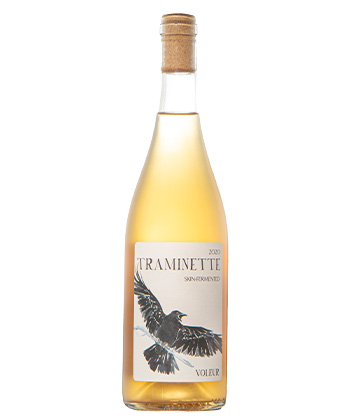
Beekeeper turned mead maker turned winemaker George Martin and his family have been on a real journey. After producing honey across the country, the Martin family finally settled in New York in 1998 to make mead and wine. After experimenting with different fruit wines and a range of grapes, including hybrid varieties, a skin-fermented Traminette makes complete sense for George and fam to take on. And it’s good stuff. The nose is like apple brandy without the heat, a hint of orange blossom, and a dose of freshly grated ginger. The palate is dry with a tight fruit concentration and great acidity. To be able to coax this kind of complexity out of a varietal wine made with a hybrid grape is a feat, and now I want to taste the mead!
Average Price: $18
Rating: 89
Santa Julia ‘El Zorrito’ Chardonnay 2022
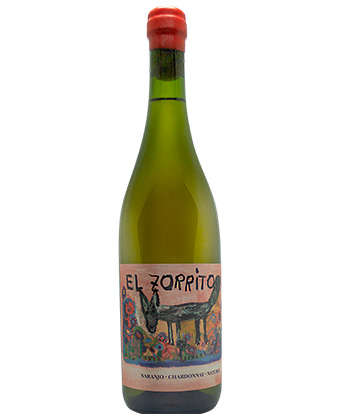
The Zuccardis are a pioneering wine family in Mendoza. It all began in the ’40s when Alberto Zuccardi moved to the area from the far north. The winery was established by the ’60s, and the family continued to innovate in the agricultural and winemaking side. They have never been afraid of experimentation, crafting Argentina’s first ever Tempranillo and working with Italian grapes such as Aglianico, from Alberto’s hometown of Avelino in Campania, Italy, as well as the punchy Bonarda grape. Today, that innovation takes on a new hue with this unique orange wine made with Chardonnay. This is a great example of how the Zuccardis take on new ideas. Orange peel and ginger aromas with a slight hint of chamomile tea waft up on the nose. The mouthfeel is refreshing as well as engaging with good fruit depth and a subtle tannin structure. The vibrant acidity cuts through the weight, hitting your palate in all the right spots.
Average Price: $19
Rating: 90
Charles Frey Maceration 2021
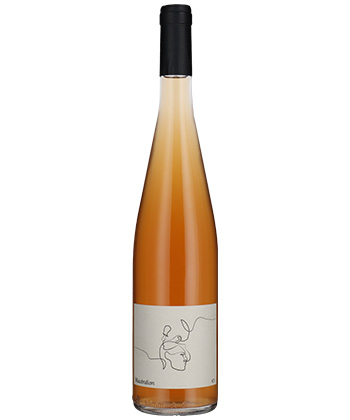
Charles Frey and his wife Renée were pioneers of sustainability in Alsace, converting their vineyards to organic farming in the late ‘90s, before it was cool. Today, the winery is still at the forefront of sustainability as the third generation of the family stewards their 14 hectares of land. This wine is just a thirst-quenching gem. The aromatic blend of local grapes in skin-contact form is a gift from Dionysus. Blood oranges, and grapefruits, and juicy apricots, oh my! The palate is deep and tannic while still being extremely refreshing, slaking your thirst and readying your palate for more.
Average Price: $26
Rating: 94
Christina Netzl ‘Christina’ Orange 2022
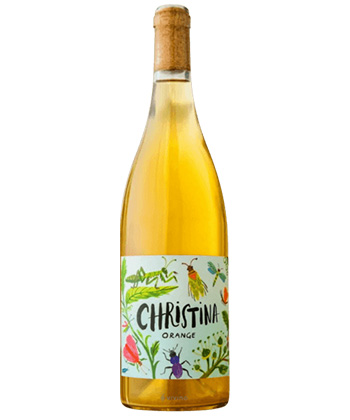
Christina Netzl’s family has been farming and living in the village of Göttlesbrunn in the Carnuntum region of Austria since the 17th century. In 2013, Christina was inspired to convert her family’s entire property to certified organic agriculture and start her own line of wines. Her dedication to sustainability can be seen on the labels of her “Christina” line of wines, with drawings of the various beneficial insects that balance the environment in the vineyards. This orange wine is made with Chardonnay left in contact with its skins for about 20 days. The nose is expressive with comfy notes of soft bruised pear and a hint of ginger and chamomile tea. The palate is so well balanced with soft fruit, good natural acidity, and a delicious saline quality running through to the finish. The bottle does have some sediment, but don’t let that deter you from this awesome wine.
Average Price: $26
Rating: 91
Division Winemaking Company L’Orange 2021
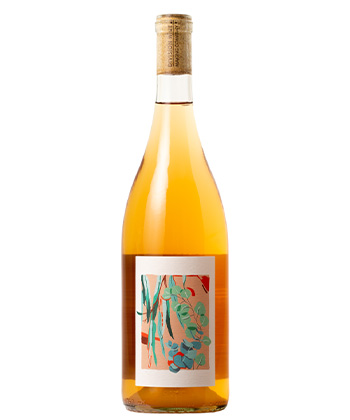
A former banker and a winemaker with experience in French vineyards walk into a winery. Well, they did that but then actually began one of their own. Co-founders Thomas Monroe and Kate Norris are true earth nerds. They are attuned to the power and vulnerability of nature and attempt to harness that in their wine. This attention to detail is apparent in all of their wines, and especially so in this skin-contact expression. L’Orange is a textural gem. It has a nice balance on the nose, showing very subtle notes of orange zest and a slight hint of floral honey. The palate is great with awesome texture, good fruit depth, and a slight grip.
Average Price: $26
Rating: 92
Kobal ‘Bajta’ Belo 2021
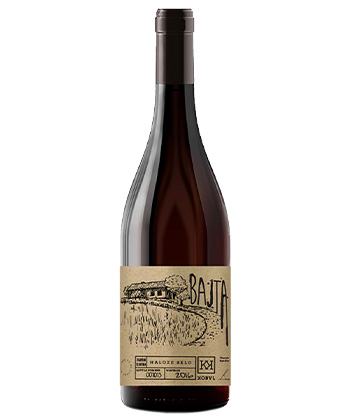
Slovenia is one of the oldest wine regions in the world. Kobal is situated in the Haloze (Halos) appellation in northern Slovenia near the Austrian border, which is one of the most historic winemaking regions in the country, dating back 2,000 years. The region is known for its steep slopes with old vines that dig deep into the marl soils. Kobal winery’s owner and winemaker Bojan Kobal works to dial in on this distinct terroir. Bojan crafts a wide range of wines to express the potential of the region, including this stunning orange wine. This wine is a blend of Welschriesling, Pinot Gris, Sauvignon Blanc, and Chardonnay, and when these white grapes are blended in skin-contact form, they take on a whole new personality. The nose is a comfy kiss of candied peach with some minerality running through. The palate is dry, balanced, and expressive with fresh apple, agave, and a waxy honey note. This wine is increds.
Average Price: $28
Rating: 94
Tinto Amorio Bheeyo 2022
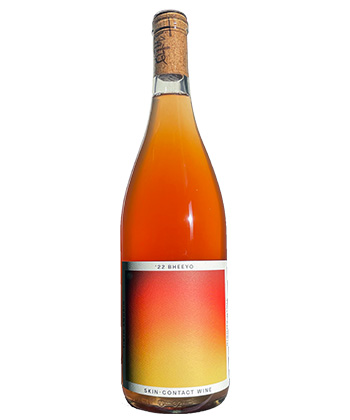
Gewürztraminer is a fun wine. It’s so expressive. If you’ve ever eaten lychee, it often has a similar unique pop of savory-sweet flavors with some honey and floral notes. BUT! When the grape sees some skin contact, the science of fermentation changes and the wine takes on a completely different profile. This wine is a great example — it’s mostly Gewürtz (industry nickname), but also has a very small dose of Zinfandel. The nose is straight grapefruit. Like, fresh cut juicy, drippy grapefruits with a dollop of honey and a wisp of ginger. The palate is very balanced with a slight hint of tannin that frames the wine well. Excellent natural acidity bursts through, keeping it very refreshing.
Average Price: $29
Rating: 92
La Maliosa ‘Saturnia’ Bianco 2020
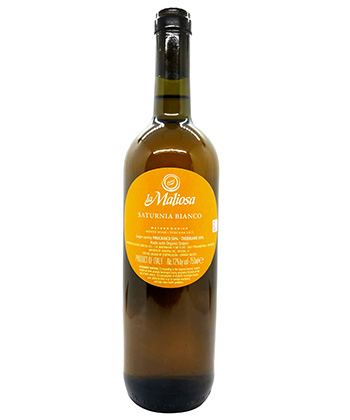
Antonella Manuli began in finance and ended up in the Maremma toward Tuscany’s western coast. She ran a luxury spa for a decade and kept thinking about how wonderful the nature in the area was. She began looking for land and in 2013 embarked on an organic project producing wine, honey, and olive oil. This is her skin-contact white wine made from two types of Trebbiano grapes, and it really shows her and her team’s dedication to the land. It’s as down to earth as Antonella. The balance is undeniable with a nose that is a mix of honeyed and savory notes. There are hints of melon, ginger, and agave as well. The palate is dry with a slight grip and a wonderful core of fruit that softens the prominent tannins. The balance is undeniable.
Average Price: $30
Rating: 91
Rodica Malvasia Selection 2019
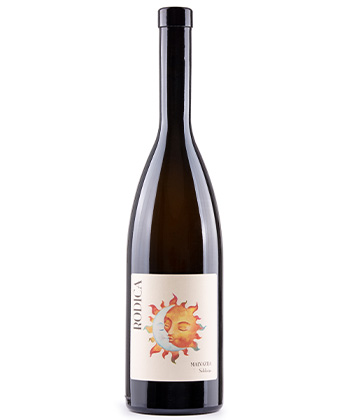
In Slovenian Istria, overlooking the Gulf of Trieste, the Rodica family farms 15 hectares of native varieties Refosco and Malvasia along with some international grapes like Pinot Gris. They have been certified organic since the early aughts but have been paying attention to the nature of their land since beginning in the late ‘90s, planting vines on land that had been abandoned for half a century. This skin- contact Malvasia shows the care they put into their land and wines. It has impeccable balance, expressing waxy yet creamy characteristics all at once along with some orange notes. You will also catch light hints of cardamom and flecks of white pepper on the nose. That soft texture continues on the palate with a subtle grip around the edges. There is blazing acidity and balanced weight that both contribute to an incredibly focused finish.
Average Price: $30
Rating: 93
Two Shepherds ‘Centime’ 2020
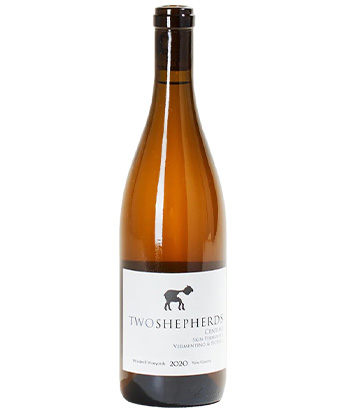
It’s not about what we know, it’s about curiosity and stepping out of a commercial comfort zone to try something new. Something needed. That is the American innovative spirit. Originally a “Rhône Ranger” of sorts, former wine blogger turned winemaker William Allen took on grapes like Pinot Muenier and Trousseau in California, a state that is obsessed with Bordeaux varieties. That’s what’s up. The best part is these wines are damn good. This skin-contact wine, made from southern French varieties Picpoul and Vermentino (Rolle in French) couldn’t have gone better. Notes of orange peel, Earl Grey tea, and juicy pear spiked with ginger meet the nose. The palate is soft with waves of savory notes under a slightly creamy mouthfeel. A very subtle and balanced skin-contact wine.
Average Price: $34
Rating: 92
Mother Rock ‘Liquid Skin’ 2021
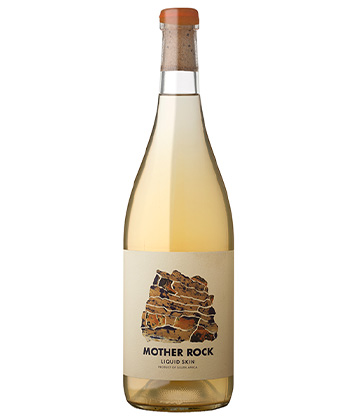
Johan Meyer goes by “Stompie” in the wine circles of South Africa, where he is quickly gaining recognition for his cool-climate Pinot Noir and Chardonnay. But he doesn’t stop there. Mother Rock is his way of showing how skin contact is done. And especially with the Chenin Blanc grape, which can be finicky in this style. The grapes for this wine are sourced from a single vineyard on the Paardeberg Mountain, from organic and dry-farmed old vines. The wine is aged with the skins and stems for a long maceration of eight weeks. This lends to a unique wine with notes of juicy citrus, orange rind, and a subtle touch of ginger. The tart mouthfeel is balanced by a good depth of fruit. It’s a fun skin-contact wine for those more laid-back moments.
Average Price: $36
Rating: 90
C.L. Butaud Ramato 2021
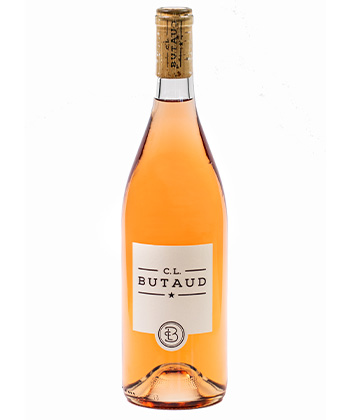
Randy and Brooke Hester are killing it in their native Texas. They spent time in Napa learning all things wine and it is sure paying off in the Lone Star State. Today, they produce a wide range of wines that continue to impress. “Ramato,” meaning copper in Italian, is the term used in northern Italy to describe skin contact wines made with the Pinot Grigio grape, due to their distinct, copper-like color. While this style isn’t necessarily popular in Texas, this wine works. The nose has similar aromas to a rosé with subtle red berry fruit notes like strawberry and cranberry. The palate is more about texture than flavor, but wow, is this thing balanced. The fruit is mild, but the structure is so damn balanced that it doesn’t matter. Good stuff.
Average Price: $38
Rating: 90
Johan Vineyards Maceration White 2021
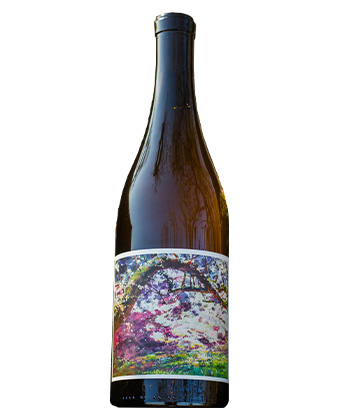
Johan Vineyards is one of five bonded wineries in the newly awarded Van Duzer Corridor AVA in Oregon. They practice biodynamic farming and are Demeter-certified (the biodynamic certification). This earthy science works wonders for their wines. This orange wine is amazing. Made with a unique blend of 40 percent Kerner, 30 percent Friulano, and 30 percent Grüner Veltliner, the nose is alive with bright mineral notes of peach and orange peels. There is a subtlety to this wine that just works. On the palate, the acidity is blousy and only tamed by an expertly restrained tannic grip. It’s a wine that manages to be wildly refreshing and deeply structured all at once. Hear, hear for sustainable agriculture!
Average Price: $38
Rating: 94
Paraschos ‘Orange One’ 2019
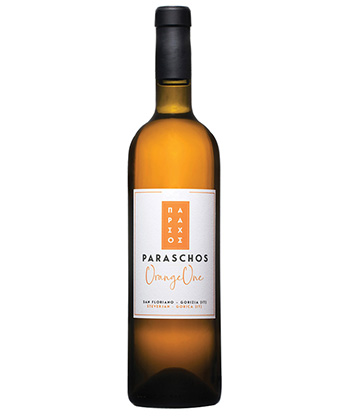
Gorizia is a small town in the Italian region of Friuli-Venezia Giulia that is producing some incredible skin-contact wine. In Friuli, bordering neighboring Slovenia, this was the style that defined the culture for many years. After the style nearly disappeared in the modern era, the region is in rediscovery mode, bringing back the traditions of the past while incorporating the modern techniques of today. The Paraschos winery has walked this fine line with Orange One. Made from native Friulian varieties Ribolla Gialla, Malvasia Istriana, and Friulano, this is Gorizia history in a bottle. The nose is filled with subtleties. A hint of mint, a waft of expressed orange peel, a distant whisper of marzipan. The classic palate has medium depth with a subtle tannic frame that is all very balanced by excellent natural acidity.
Average Price: $42
Rating: 93
Tomac Marany 2020
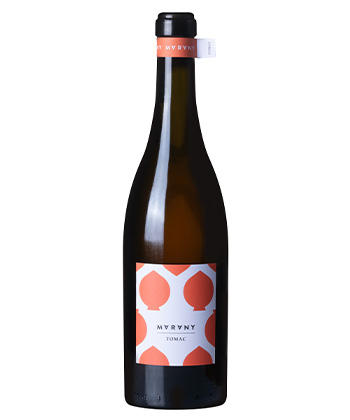
The Tomac family has always listened to the earth. The family’s amphitheater-sloped vineyards are located in the rolling hills of Plešivica, southwest of Zagreb in the center of Croatia. While they have been making wine in this area for over a century, it was only in 2018 that owner Tomislav decided to actively begin applying biodynamic agriculture to their nine hectares under vine. And he states it was “definitely the best decision we’ve ever made.” This kind of attention to the land comes through in this earthy skin-contact wine. There are notes of sliced pear up front on the nose. Then on the palate, it has a distinct Cognac-like characteristic, with notes of caramel and cumin in the background. The palate is dry and balanced with mild fruit and great acidity.
Average Price: $43
Rating: 93
FAQs
How is Orange Wine Made?
Orange wine is made from white wine grapes that have been left in contact with their skins, which is why the category can also be referred to as skin-contact wines. Normally, white wine grapes are removed from their skins after pressing the grapes, leaving a translucent “white” wine. In the case of orange wines, the juice is macerated on the skins, similar to how a red wine is made. The skins can lend color, structure, and tannin to the wine, giving orange wines a unique hue and flavor profile compared to white wines made with the same grape varieties.
What Grapes Are Used in Orange Wine?
Orange wine can be made from any white grape varieties from Chardonnay to Sauvignon Blanc. However, there are some grapes that are more commonly used to make skin-contact wines because of the unique color their skins lend to the wine. For example, it is common in Italy to make a skin-contact wine from Pinot Grigio, because the unique color of the skins give the wine a copper-like color. This popular style of wine is actually called “ramato,” meaning copper in Italian.
Where Does Orange Wine Come From?
With the growing popularity of orange wines, producers are now making them all around the world. However, the tradition of making skin-contact wines is thought to have originated in the country of Georgia, which is often referred to as the birthplace of wine. In Georgia, the white wines would be macerated on the skins and aged in clay amphorae they call “qvevri.” This tradition continues to this day, and many ancient winemaking regions also carry on this tradition. However, as seen in this list, there are incredible orange wines to explore from almost every region now.
